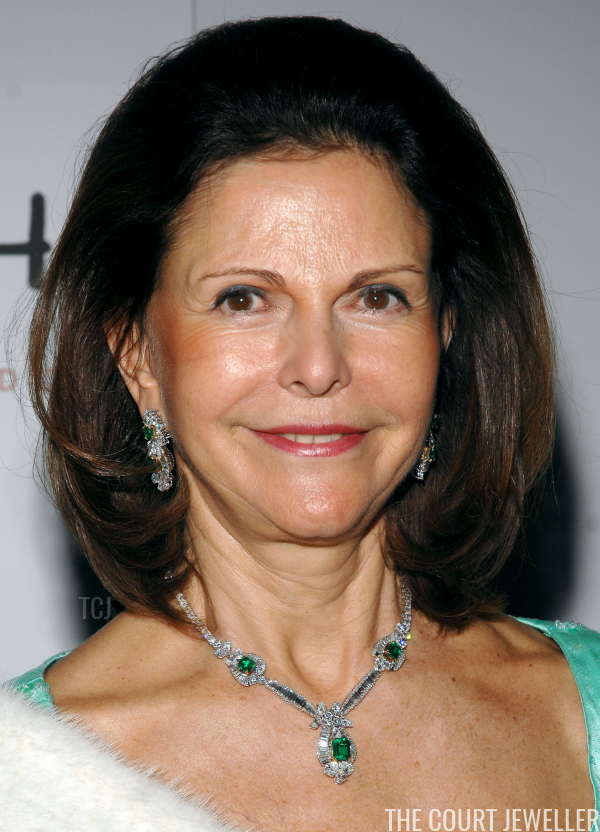 |
| Rob Loud/Getty Images |
The Nightly Necklace: Princess Sibylla’s Pearls
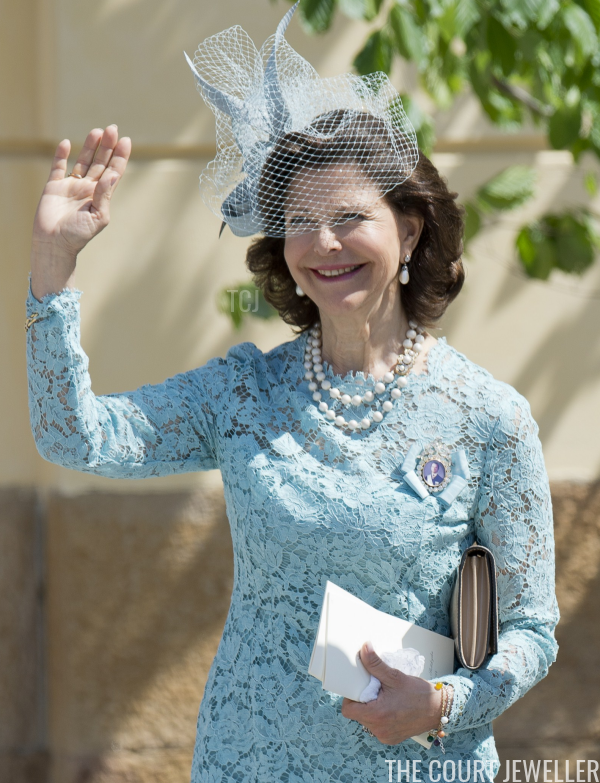 |
| JONATHAN NACKSTRAND/AFP via Getty Images |
What We Learned from Kungliga Smycken (Part 2)
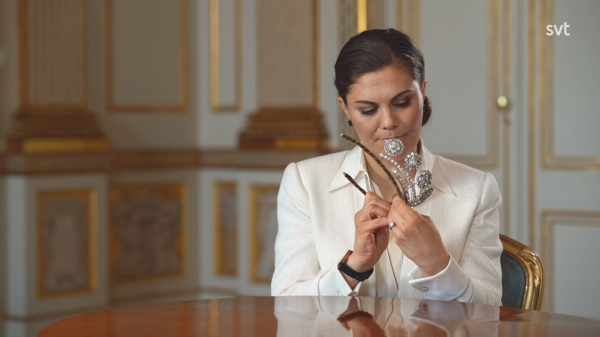 |
| SVT |
Our coverage of the fantastic new Swedish royal jewelry documentary, Kungliga Smycken, continues with an overview of the information we learned during episode two! (Don’t forget to watch the actual episode — the interviews, footage of the jewelry, and archival films are beyond excellent!)
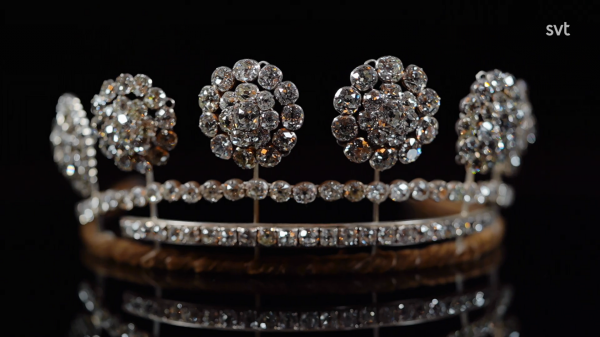 |
| SVT |
The documentary clarifies that these diamond rosettes were indeed the same ones added to King Carl XIV Johan’s crown for his 1818 coronation, but the film reveals that they have a longer history: as sometimes speculated, they are indeed buttons from the collection of Queen Lovisa Ulrika. Crown Princess Victoria believes that Carl Johan added them to his crown to emphasize continuity with the previous Swedish royal dynasty.
The film explains that the rosettes were removed from the crown in 1909, and according to Goran Alm, Victoria of Baden came up with the idea to use them to make the tiara. The construction of the tiara began during her lifetime, but ceased after her death. In 1976, after the unfinished tiara was discovered in the vaults, the piece was finished. The documentary confirms that Princess Lilian was the first person to wear the tiara, which is called the “Carl Johan Tiara” within the family.
Crown Princess Victoria examines the tiara on camera and notes that the rosettes are marked with text on the reverse side. Christian Bolin, part of the family firm that has served as Sweden’s court jeweler since 1916, confirms that the markings note the dimensions and sizes of the individual diamonds. The markings are likely meant to serve as a guide should the buttons need to be rebuilt. Victoria also shows that the rosettes can be removed from the tiara frame, but she emphasizes that removing them is difficult, and the family doesn’t use them in other ways (as brooches, etc.).
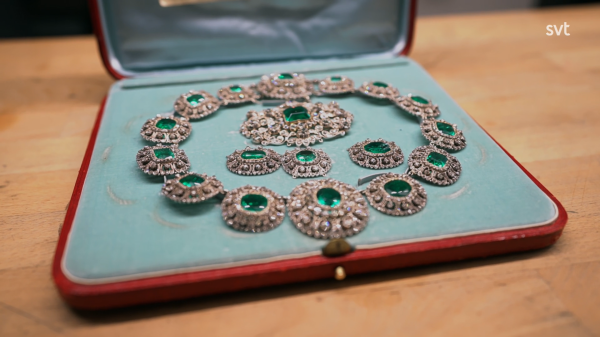 |
| SVT |
The jewelers in the Bolin workshop give us a close-up view of the family’s remarkable suite of emeralds, which originally belonged to King Carl XIV Johan. A gemologist, Elena Avallon, notes that the emeralds themselves are likely Colombian. Göran Alm explains that the first person to wear the individual medallions as a necklace was Queen Sofia, who sewed them together for that purpose. He explains that, much later, Princess Sibylla had Bolin alter them so they could be worn more securely as a necklace.
Crown Princess Victoria talks about the emeralds, explaining that she “really feels a responsibility” toward the historic gems. She explains that she carefully inspects them after she wears them to check for damage. Queen Silvia reiterates the need to take care with the pieces, emphasizing their “cultural value.”
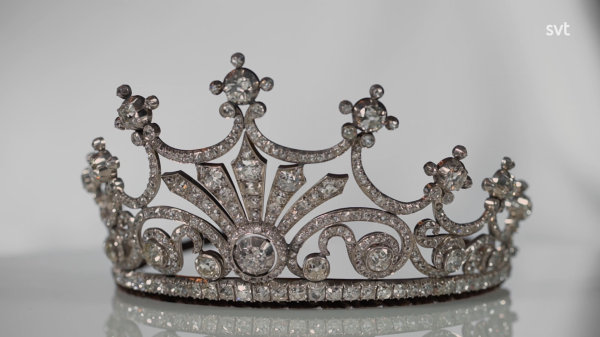 |
| SVT |
The film reiterates Trond Noren Isaksen’s argument that the tiara was made for Queen Sofia by upgrading a diamond comb found in the jewelry inventory of King Carl XIV Johan. But perhaps the most interesting information from the documentary comes from Queen Silvia, who vividly describes the painful effect the tiara had on her head during her first Nobel appearance in 1976. She was in such pain, apparently, that Prince Bertil noticed during dinner and advised her to remove the pins securing the tiara. The results of that change were even worse, as the heavy tiara dug deeply into her scalp.
Changes were made to the tiara afterward to make it more comfortable. The base was lengthened by Bolin to help distribute its weight more successfully, and it was shaped more accurately to Silvia’s head. According to Silvia, the piece is now much easier to wear.
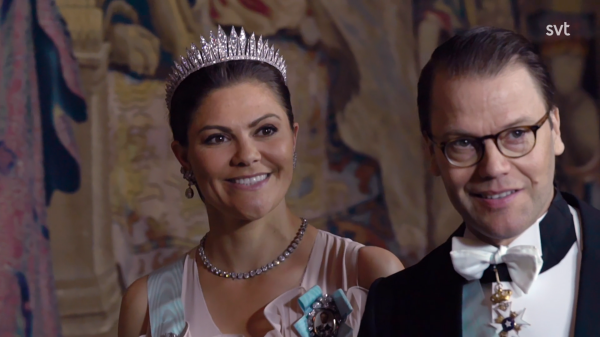 |
| SVT |
Göran Alm’s biggest revelation about this diamond sparkler is the mechanism that allows it to transform from a tiara to a necklace. A spring is used to create tension in the piece for tiara wear; that spring can be released to allow the fringe to be worn as a necklace.
Crown Princess Victoria, easily the royal currently most associated with the fringe tiara, calls the piece “very beautiful, very stylish, a little hard, but easy to wear.” She says that wearing such important jewelry makes her feel “humility” — about the responsibilities that come with her royal role and heritage.
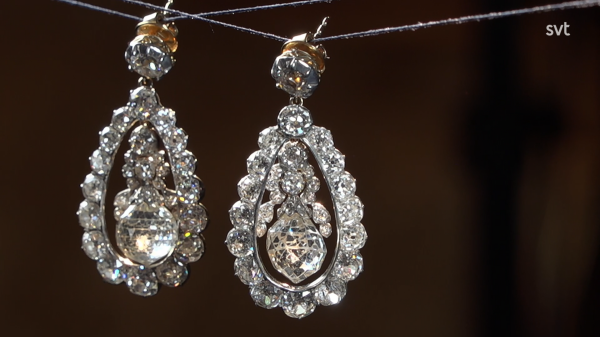 |
| SVT |
The documentary notes that these diamond earrings are some of the oldest jewels in the Bernadotte collection. Crown Princess Victoria says that she “doesn’t dare wear them.” The unique nature of the diamond briolettes is emphasized, especially the 18th-century techniques that created them.
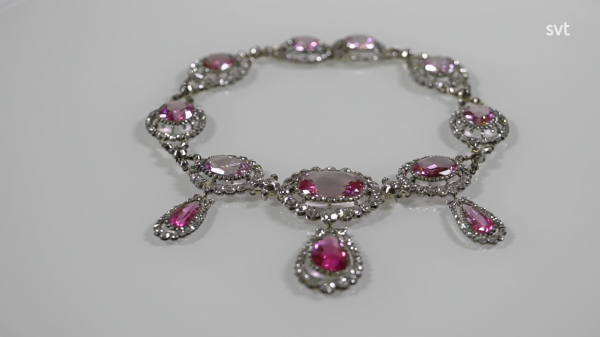 |
| SVT |
The documentary debunks the commonly understood provenance of these remarkable topazes with the help of Ulla Tillander Godenhielm, part of the famed Finnish family of jewelers. The topazes weren’t a wedding gift to Grand Duchess Maria Pavlovna of Russia from her father, Emperor Paul I. Instead, they were a gift from her mother, Empress Maria Feodorovna, to mark the birth of Maria Pavlovna’s daughter, Augusta. The set was made by Jean-François-André Duval, a Swiss jeweler and artist, in 1811, using topazes sourced from Brazil.
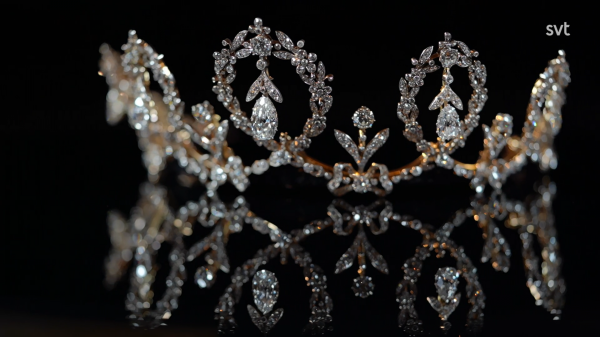 |
| SVT |
Finally, the documentary features interviews from Queen Silvia, Crown Princess Victoria, and Princess Christina about this beloved family heirloom. It’s clear that they all treasure it as a part of their memory of the late Princess Sibylla. (Crown Princess Victoria even calls it “Grandma’s tiara.”) Christina shows off the various settings of the tiara, including the two different necklace options. She reveals that she wore the garland necklace for a special New Year’s Eve party in the palace courtyard in 2000.
Christina also talks about wearing the tiara on her wedding day specifically as a way to remember her mother, who had died two years earlier. She reveals that she and her sister encouraged Queen Silvia to wear the tiara for her pre-wedding gala in 1976 as well. The sisters very much wanted Princess Sibylla to be a part of her son’s wedding festivities, but Christina says that they also wanted Silvia to understand the gesture as their way of welcoming her to the family.
- « Previous Page
- 1
- …
- 52
- 53
- 54
- 55
- 56
- …
- 276
- Next Page »